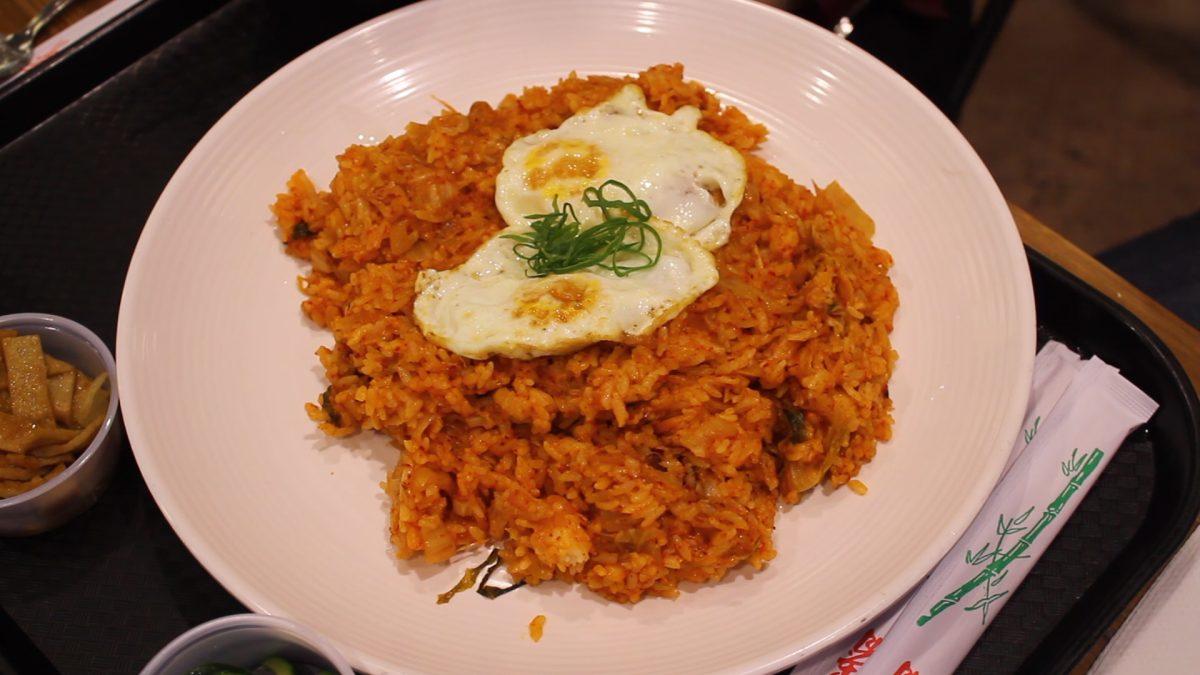
Photo by Ryan Magee | Mercury Staff.

Call me crazy, but I adore all things fermented, such as
miso, kombucha or sauerkraut. Beyond the fact that eating fermented food offers
a number of health benefits, fermented food just tastes more robust and
interesting. The only dish I hadn’t tried was kimchi, a popular South Korean
fermented vegetable dish.
Kimchi originated in the Korean Peninsula about 2,000 years
ago and was a way for people to store vegetables for longer periods of time
through salt preservation. With the introduction of Chinese cabbage and red
chili peppers, the recipe for kimchi began to resemble the form as we know it
today. Filled to the brim with Korean red peppers — or gochugaru — along with
garlic, onions and sometimes fish, jars of kimchi are placed in fridges or
stored at room temperature to be fermented for up to a week. Kimchi is a good
source of probiotics, is low in calories and boosts immunity. Fellow Mercury staffer EJ Chong and I decided to try
two types of kimchi: Napa cabbage kimchi and cucumber kimchi. We also tried
kimchi fried rice, a favorite dish among Koreans.
To give me an idea of how kimchi is made, EJ combined
chopped chunks of Napa cabbage, a type of Chinese cabbage, green onions, garlic
and loads of the gochugaru, which turned into a red paste. She then mixed all
of it together, and it looked like a very bright red chunky stew that smelled
strongly of pickles and peppers.
However, we decided to try premade versions of kimchi, as
it would take a while for the kimchi EJ made to ferment. H-Mart sells boxes of
many variants of kimchi and has multiple restaurants in its food court. The
first one we tried was Napa cabbage kimchi, which looked similar to the one EJ
made, but this one was much thinner and smelled stronger. I’m not sure what I
was expecting at first bite, but the taste was indescribably spicy and vinegary.
The fermentation process likely contributed to this very strong flavor, but it
was actually quite pleasant.
The next
type of kimchi we tried was cucumber kimchi, which the package referred to as
“stuffed cucumber kimchi.” Much to my dismay, this form of kimchi didn’t live
up to its title. It was literally whole but partially peeled cucumbers
smothered in the kimchi seasonings and bright red peppers. EJ told me that
depending on the vegetable or fruit used, the taste could change. In this case,
the cucumbers contributed a much sweeter taste than the traditional Napa
cabbage. At first bite, the cucumber’s sweet, watery taste dominated, but the
intense spiciness was what distinguished it from the
Napa cabbage kimchi. I don’t particularly care for cucumbers, even if they’re
covered in delicious and tangy seasonings, but it was still a tasty dish.
EJ said people don’t normally eat kimchi by itself, as it’s
typically eaten as a side dish or incorporated into other dishes such as soups,
stews and rice. We tried kimchi fried rice, which EJ referred to as “the mac
and cheese of Korea” because of how common the dish is for Koreans. I could
definitely see why it is such a favorite, because kimchi fried rice is quite
possibly the most decadent and flavorful fried rice I’ve tried. Biryani has
some serious competition here. Bright red, topped with a sunny-side up egg and
bursting with spicy, tangy flavors, the fried rice was both exciting and
comforting at the same time. The rice itself came with little sides such as fish
cakes, kimchi and bean sprouts, all of which were delicious and added to the
flavors of the rice itself.
It’s interesting that many different
cultures have their own version of fermented food. The Germans have sauerkraut,
which is fermented green cabbage, and the Japanese have natto, which are
fermented soybeans. It’s amazing to see the different variations of fermented
food across cultures. As for kimchi, I never thought that what’s basically
bacteria-filled spicy cabbage could taste so good and could be such an integral
part of Korean culture.